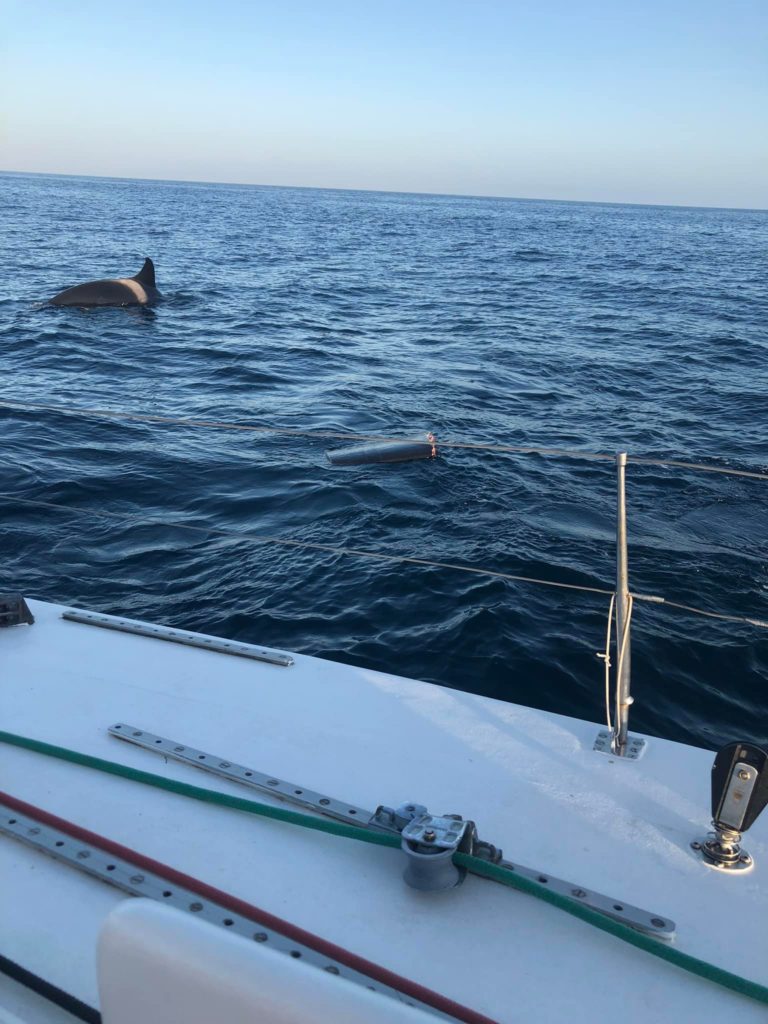SOUTH PACIFIC TROPICAL CYCLONE SEASON OUTLOOK
SOUTH PACIFIC TROPICAL CYCLONE SEASON
NOVEMBER 1-APRIL 30
NEW OUTLOOK RELEASED
Tropical cyclones, like hurricanes, are known for their powerful winds, heavy rains, and potential to cause significant destruction. Tropical cyclones frequently affect the southern Pacific and can pose serious threats to both public health and infrastructure. All vessels are advised to have a plan of action for the cyclone season.

According to New Zealand's National Institute of Water and Atmospheric Research (NIWA) and Metservice, the South Pacific may see either fewer or a normal number of tropical cyclones this season. The cyclone season in the South Pacific starts November 1 and runs until the April 30, with the typical 'peak' of the season being January - March. The outlook that has recently been released, "Southwest Pacific Tropical Cyclone Outlook - October 2024" describes a slower start to the Cyclone season, potentially less cyclone risk overall in the eastern region while potentially elevated risk in the western region. According to the NIWA Outlook, "As of early October 2024, sea surface temperatures across the eastern and central equatorial Pacific Ocean are below average and close to La Niña thresholds." Forecasters are observing more La Niña-like characteristics that tend to reduce risk in the east and elevate risk in the west where warmer water may 'stack up' later in the season. As with many weather outlooks of late there continues to be caution that while there may be less risk in the frequency of tropical storms this season, there is still a risk that those that come may intensify more rapidly or simply be very intense.

For cruisers in French Polynesia South Pacific Posse member Scott on Tartaruga shares:
What is critical to following storms in FP is the location of the MJO. Madden Julien Oscillation. You can research that but when that is over French Poly that is when the highest probability of big storms occur. Per some local Tahiti sailors they almost never have any cyclonic storms outside of MJO events. This last season Fiji announced the MJO forecast and when it would be over FP and boom the storms came. Also note that Fiji is the official metrological organization for these storms. Another important data point is they name their storms very early, mean the wind scale starts at a much lower number....NOAA tracks (the MJO) closely as well. I would educate yourself on how to read the graph. It is a bit strange.
Fiji Meteorological Service Regional Specialized Meteorological Centre Nadi-Tropical Cyclone Centre also just released a forecast on the upcoming tropical Cyclone season. Their predictions are similar.

Stay alert on great weather sites including:
- https://www.met.gov.fj/index.php?page=tcoutlook
- https://niwa.co.nz/climate-and-weather/southwest-pacific-tropical-cyclone-outlook/southwest-pacific-tropical-cyclone-outlook-october-2024
ORCAS
CHECK THE ORCA ENCOUNTER MAP

We exchange experience, information, and lessons learned; Everything in a community.
SUMMARY: DROPS SAILS – TURN ENGINE ON – GO IN REVERSE
I wish you all the best and that you never experience anything like this.
POSTED BY

Recommendations for boaters if killer whales interact with the boat
If you are sailing and you come across orcas or other cetaceans and the orcas interact with the boat, the skipper/captain of the boat will adopt, whenever possible and do not create a greater danger, the following measures:
orcas sea
Prevent people on board from getting close to the bands, trying to place them in places that provide the greatest possible protection against sudden movements that could cause injuries or a fall into the sea, and against blows caused by the sudden movement of moving parts. .
In the event of an interaction, it is always preferable to navigate by motor than by sail and avoiding stopping the boat. You will navigate according to the characteristics of the boat itself and always keeping in mind the safety margins and the wind and sea conditions, towards shallower waters, until the killer whales lose interest.
In those cases of boats sailing under sail, it must also be borne in mind that the integrity of the daggerboard could be affected, and this could influence the stability of the boat, so it is recommended to lower the sails and navigate by motor.
It is recommended, always within the safety limits and characteristics of each boat, to sail as close as possible to the coast, where there is less probability of encountering groups of orcas, especially in the vicinity of the Barbate cove.
Any ship or boat that observes the presence of killer whales or other cetaceans, whether or not they give rise to episodes of interaction, will maximize compliance with the provisions of Royal Decree 1727/2007, of December 21, which establishes protection measures. of cetaceans, especially those aimed at avoiding behaviors that may cause death, harm, discomfort or concern to cetaceans and, in general, any of the behaviors indicated in articles 4 and 5 of the aforementioned Royal Decree.
Observe, and if possible, take photographic records of the orca specimens involved in the event. Observation activities will be carried out without disregarding precaution and compliance with the obligations of good marine practice, without prejudice to the exercise of any necessary decision for the safety of navigation and only when possible and safe, without expose the ship or vessel, the people on board or the cetaceans to greater risks.
Take into account any other new instructions or recommendations that may be disseminated to sailors.
The obligation that every captain/skipper has to report those events likely to be a danger to navigation is recalled, and, therefore, interactions with orcas must be reported through the corresponding Maritime Rescue Coordination Center.




